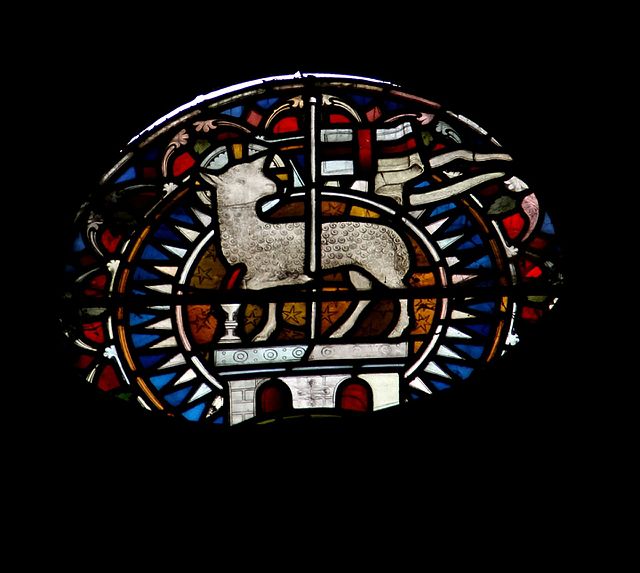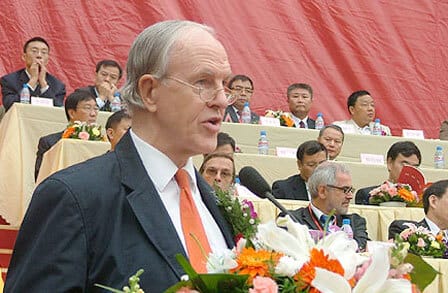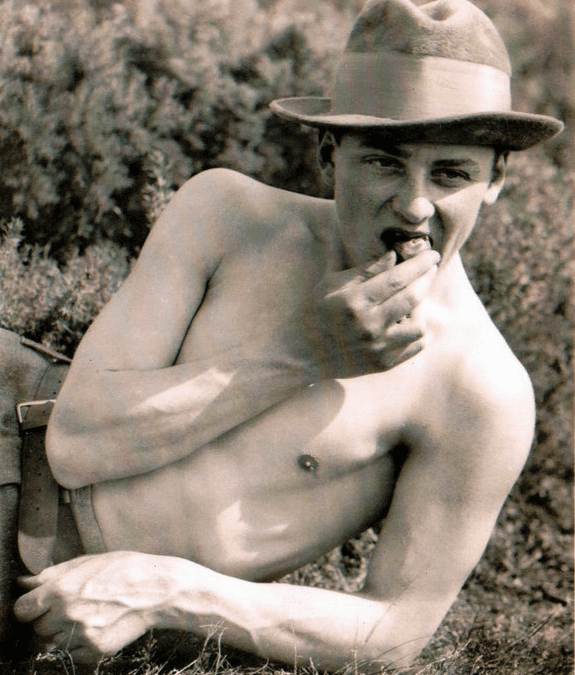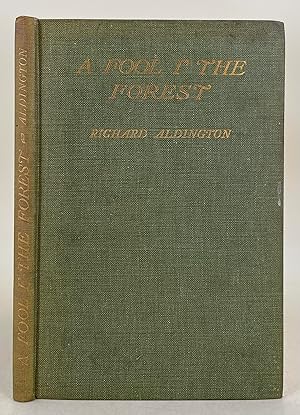Report of the Twenty-Eighth Meeting of the London D. H. Lawrence Group
Maria Trejling
Flickering Figures: Modes of Reading Animals in The Rainbow
Thursday 27th April 2023
By Zoom
18.30-20.00 UK time
ATTENDERS
15 people attended, including, from outside of England, Shirley Bricout in Brittany, Robert Bullock in Antibes, Shanee Stepakoff from Connecticut New Haven, and Kathleen Vella in Malta
INTRODUCTION
Maria introduced her talk as follows:
‘I will talk about the episode in The Rainbow that depicts Anna and Will’s conflict over the meaning of a lamb in a church window, which I use to explore the two figurative modes of allegory and symbol. I would suggest that we thereafter together discuss some of the issues I raise in relation to the scene toward the end of The Rainbow in which Ursula encounters the mysterious horses. Most readers find these horses evasive. On the one hand they seem to indicate a meaning beyond a literal level, on the other this figurative meaning is difficult, perhaps impossible, to articulate. Are we aided by categorizing the mode of their figurativity so that its structure becomes clearer, or is this merely a way to soothe our readerly discomfort with the horses’ unfathomability? And is it possible to think of the horses as figurative without subsuming them into a representational function?’
READING
Suggested reading from The Rainbow (page references to the Cambridge University Press edition): 148-151, 450-454.
BIOGRAPHY
Maria Trejling is a PhD Candidate in Literary Studies at the Department of Culture and Aesthetics at Stockholm University, conducting research focused upon how the nonhuman turn in the humanities relates to poetics, literariness, and aesthetics. Her next article, “More Swallows to Follow: Sweeping, Swirling, Wheeling Turns in H.D.’s Asphodel,” will appear in issue 18.2 of Modernist Cultures. She is currently a member of the editorial board of the journal Tidskrift för litteraturvetenskap (Journal of Literary Studies), while finishing her dissertation on metaphorical creatures in novels by H.D., Virginia Woolf, and D.H. Lawrence.
PRESENTATION
Maria first positioned her talk in the context of her PhD thesis, which is on Lawrence, Woolf and H. D. and which concerns animal metaphors. Her aim is to gain a sense of metaphors as interactional and spectral, conflating being and non-being, rather than as stable and substitutional tropes. More broadly she is interested in the relationship of all kinds of figurativity – metaphor, symbol, and allegory – to being (she acknowledged her inspiration by Michael Bell’s Language and Being). She said that whereas allegories both insist on and dismiss their literal level, Lawrence understood symbols as standing ‘for units of human feeling, human experience. A complex of emotional experience is a symbol. And the power of the symbol is to arouse the deep emotional self, and the dynamic self, beyond comprehension’ (from Lawrence’s introduction to The Dragon of the Apocalypse). Therefore for Lawrence, as for Schelling, bodies and ideas are unified in a symbol.
In The Rainbow, Maria argued that Will Brangwen stood on the side of symbol, whereas Anna stood on that of allegory. In a church service, Anna finds that its language does not go deeply enough, whereas Will barely comprehends its denotations, but is satisfied. Will likes the stained glass window depicting a lamb and flag, whereas Anna distrusts what the lamb might be denoting, insisting that it should be only a literal lamb. When Anna insists that Will tell her what it is a symbol of, and he responds, it is at that point sacrificed for him as a symbol in the Lawrencian sense. Maria noted that this is one of several scenes in Lawrence in which the materiality, literal depictions, and symbolic meanings, of stained glass, are played upon; here, however, they are also explicitly debated. She then turned to metaphors, which she described as ‘spectral’ since they conflate being and non-being and haunt the present with the past, and also since they – if used repeatedly – either die, or solidify into symbols (though not in Lawrence’s sense) over time. She concluded that the lamb in the window in The Rainbow is not an allegory, a symbol or a metaphor, though Anna and Will experience it as the first two of these respectively. Rather, it flickers between these modes, and its overall status is left open.
By way of initiating the discussion, Maria turned to the horses by which Ursula feels threatened at the end of The Rainbow, and suggested that these are metaphors rather than symbols or allegories, although it is hard to say what they signify – their indeterminate meaning possibly indicating Lawrence’s struggle with human language.
She welcomed hearing what we thought.
THE DISCUSSION
Kathleen Vella thought that the horses, like the cattle on the lake island in Women in Love, symbolize sexuality and passion. Maria responded that horses indeed had a history of this association, to the point of being symbolic of it. Kathleen responded that in Women in Love, however, it is Ursula who tries to defend a horse – of a very different kind – from being tortured by Gerald. Catherine thought that Gerald’s mare was more representative of certain categories of human (including the female and the trench soldier) than either Women in Love’s cattle or The Rainbow’s horses, which more resemble each other and are more decidedly animal.
She thought that the horses in The Rainbow, quite apart from any denotation, serve a vital narrative function; they emotionally break Ursula, and kill her child, thus making the plot of Women in Love possible for her. Maria concurred that just before that scene, Ursula was thinking of writing to Skrebenksy, therefore something needed to be broken in her. Nonetheless, the question remained of why Ursula responded to the horses in the way that she did. Victor speculated that Ursula was aware that a change in herself was needed, and that not just Lawrence, but she, was using the horses to that end. Catherine shared her experiences of walking her dogs in the Peak District, which can incur danger from cattle; when she has felt such fear she experienced it as purely physical; by contrast Ursula’s fear seems to have a metaphysical dimension, and in any case horses are not known to be as dangerous as cattle. Maria wondered whether they were to her an image of Skrebensky. Steve speculated that the horses represented a male-dominated society, adducing Loerke’s sculpted horse in Women in Love (which however Ursula denies to be a horse).
Catherine thought that it was one of the distinctive and particularly interesting features of Lawrence as a writer that one does not always know whether he is being literal or figurative – for example in his references to electricity as involved in human bodies and sex – and that the high stake involved in this uncertainty was whether or not any kind of transcendence of the purely physical is possible. Steve thought that parts of The Rainbow were in the mode of prose poetry, and as such reached out to a metaphysical level. Shanee Stepakoff suggested that Maria consider Jungian interpretations of Lawrence’s work, whilst Kathleen Vella suggested a Biblical approach; The Rainbow (‘my Bible’ as Lawrence called it) opens with a Genesis story and ends with apocalyptic horses.
Finally Catherine asked Maria why – given that her topic was figurative language – she had chosen to focus on animals. Maria answered that animals are the ideal case study because it is through thinking about them that humans have negotiated their own animality, and the fact that (in a post-Darwinian world) we think that we both are, and are not, animals. Plant metaphors, by contrast, do not have the same stakes for the human subject. She concluded by saying that some people in animal studies want to abolish figurative readings of animals, but that diminishes the literariness of literary works, and it is best to read animals at multiple levels.
After the event Vic West suggested in an email that ‘the writing in the last chapter might not be the genius we see elsewhere’, observing that Leavis saw the last chapter as a cessation rather than a satisfactory ending.
Trevor Norris asked Maria what she thought of Tim Morton’s ideas of ‘spectrality’ of being, and ‘the inevitability of anthropomorphism and the need to acknowledge the way humans are “morphised”, as he puts it, by other animal forms and other forms of being.’ Maria noted that the former idea had already been voiced by Derrida: ‘our being is always divided, contaminated by the other (by the past and the future, by other creatures in and outside our bodies, by the unconscious)’. She said that the second thought was now the dominant attitude towards anthropomorphism within animals studies, ‘although specific forms of it are conceived as problematic. Rather it’s being affirmed in various ways, and recognized as a way to engage with and empathize with animals.’




